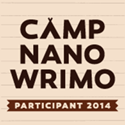
The Punishment of Sisyphus
At the beginning of October, I had my first round of edits back on my From Here to Nashville sequel novella, Over You, with suggestions as to what I might rewrite before submitting it for the final, final edit. As I wrote this book some time ago, before The Vineyard in Alsace in fact, there were a lot of things that I thought I had improved on since then. So I got to work and sent it back to the editor again, hoping that I had put most of those rookie errors right.
Then while I was waiting for that one to come back, my latest novel, let’s call it The Bistro, came back from the Romantic Novelists’ Association. This is a first draft that I had sent in for my final New Writers’ Scheme assessment. I told one of my writing friends that I thought this was the best first draft I had ever written. Famous last words! The report I had back is nine pages long and very thorough, and also very supportive, but I was gutted to see the same comments coming up about where my writing isn’t quite hitting the mark. You know: show don’t tell, ‘goal-motivation-conflict’, make sure you describe the setting etc. And my heart sank because I really thought I had worked on all those things and cracked them. Still, I left it for a few days while I tried to think positively about where I stand with my writing craft four years down the line.
And just as I was getting there, Over You came back with its final edits as well. Many of the comments are about things I really should have got to grips with by now – or at least, I feel I should have. Everything I have to do is manageable but it still leaves me feeling like I’m not making any progress, and that is so disheartening. It has left me wondering whether if I was traditionally published, with an editor guiding me, I might actually be a better writer by now. Don’t get me wrong, I know in my heart that I am a better writer in many ways, but the progress really does seem slow sometimes 😦 I keep reminding myself that a first draft will need work, and so will the second, third etc, and that the final draft is the one that needs to be the most polished, so if it’s not perfect yet, it doesn’t matter. And that’s what we use an editor for of course – to help us produce the most polished version we can. I can at least say that I have been very lucky with the majority of editors I have worked with.
I have picked myself up enough to make a start on the novella edits from tomorrow and then I’m going to push on and write the next, and final, From Here to Nashville novella which will tell Jenna’s story. Then I hope to publish them both together early next year. After that, I will come back to the next novel and hope that with the passage of time, I will feel better about my report and not so vulnerable about my weaknesses as a writer.
I’d be interested to know whether anyone else feels like this when they get their edits back and whether, if you’re traditionally published, you have an editor who is more like a mentor for you?
*****
News
As you know, in September, I auditioned to be added to the WI’s directory of speakers in my region. At the audition, I was really nervous but it seemed to go well. I have heard back since the last time I posted to say that I have been accepted into the directory and I am really pleased about it. I have also received my first booking but incredibly, it is for January 2019! I thought it was a mistake at first but it’s not – they just like to plan ahead! Still, I’m looking forward to it and I’m glad I applied.
*****
Marketing
 As you may know, I did a Kindle countdown deal last month for From Here to Nashville, which saw my debut novel reduced to 99p. I tried to get a BookBub featured deal for it but to no avail – apparently, they only accept 5% of the submissions they receive so that did make me feel a bit better! I did have some success with some smaller promotion companies but although I sold a fair number of copies, it wasn’t earth-shattering. Many people supported me though, especially on Facebook where I also did a promotion, and for that I was very grateful. I also sent out a newsletter to my subscribers (you can join it here if you’d like to be kept up-to-date with what I’m doing), and this was well-received and widely shared.
As you may know, I did a Kindle countdown deal last month for From Here to Nashville, which saw my debut novel reduced to 99p. I tried to get a BookBub featured deal for it but to no avail – apparently, they only accept 5% of the submissions they receive so that did make me feel a bit better! I did have some success with some smaller promotion companies but although I sold a fair number of copies, it wasn’t earth-shattering. Many people supported me though, especially on Facebook where I also did a promotion, and for that I was very grateful. I also sent out a newsletter to my subscribers (you can join it here if you’d like to be kept up-to-date with what I’m doing), and this was well-received and widely shared.
I have now taken FHTN off its automatic re-enrolment to KDP Select and towards the end of the month, I’m going to expand distribution to other platforms again to see what happens. However, I should say that this year, since The Vineyard in Alsace came out, I have sold five times as many copies of From Here to Nashville as I did last year, so that is good news.
 I have had a number of guest appearances on other blogs since my last post was published here. I was featured on the Love Books Group blog for their #FavFive feature and I was also on Delightful Book Reviews talking about a typical day in my writing life as an author. Not only that but The Vineyard in Alsace was also reviewed in France magazine and it was a favourable review too!
I have had a number of guest appearances on other blogs since my last post was published here. I was featured on the Love Books Group blog for their #FavFive feature and I was also on Delightful Book Reviews talking about a typical day in my writing life as an author. Not only that but The Vineyard in Alsace was also reviewed in France magazine and it was a favourable review too!
*****
Social
Next week, I will be giving a talk at our monthly Society of Authors meeting about how I use Scrivener in my writing. Scrivener’s not for everyone but it works for me and our group of writers is very interested to know more about it. If you’re engaged in NaNoWriMo at the moment, Scrivener is usually offered as a prize if you make it to the end. I bought my copy for my half-price way back when I did NaNoWriMo and it has been worth every penny.
I’m also meeting up with my local RNA group for lunch this coming week. Next week, I will be attending the RNA Committee’s Christmas lunch to which I’ve been invited as the Deputy Editor of our quarterly newsletter, and after that, it is our Winter Party in the evening. The week after that I’m meeting another RNA friend for a writerly catch-up as well so will be keeping myself busy, and full (!), with all these social activities.
In the final week of November though, I’m going to The Society of Authors’ AGM because they’re holding some workshops as well, one on ‘Building Your Brand’ with Joanne Harris no less (swooning already!) and one called ‘Beyond the Book’ which is about innovative ways to market your book and reach new audiences. I will report back on all this activity next month.
*****
As always, another busy month lies ahead and that’s all before we even get to Christmas. I hope all is going well for you with your writing. Please do leave me a comment below and tell me how you’re getting on. Thanks for reading!


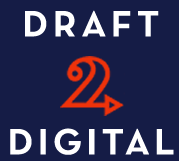 a bit of research, I came across an aggregator called
a bit of research, I came across an aggregator called 




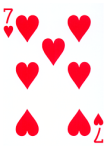
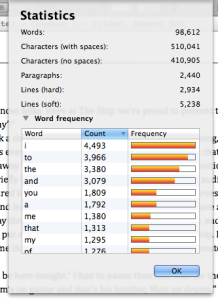
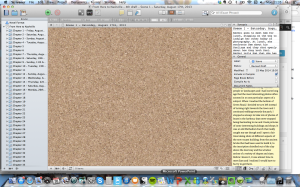
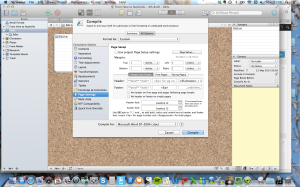 In the third box along, under Header, I changed <$surname> to say <$fullname>, leaving all the other symbols as they were and I changed the case to lower case. I cut the page number information <$p> and pasted it into the middle box under Footer so that the page number would come up at the bottom of every page. I also changed the Header and Footer fonts here from Courier which I didn’t want.
In the third box along, under Header, I changed <$surname> to say <$fullname>, leaving all the other symbols as they were and I changed the case to lower case. I cut the page number information <$p> and pasted it into the middle box under Footer so that the page number would come up at the bottom of every page. I also changed the Header and Footer fonts here from Courier which I didn’t want.



